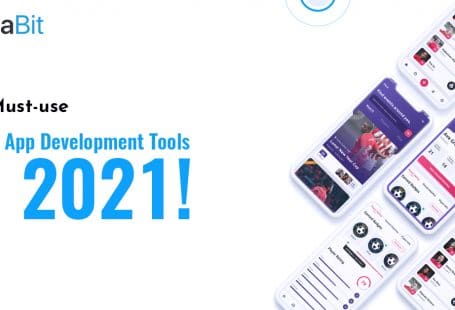If you go out and search for a dull moment in a startup ecosystem, then your search will go on and on without much success. So many ideas, so many roadmaps are being churned at the same time. For instance, startups want to build their own social networking platforms. They want to create unique ways to interact with customers.
For sure, Facebook is the reference point. It has added exciting dimensions to the social networking space. We have been a part of many such projects, building social networks from scratch, based on our philosophy of product development.
Product Development for us revolves around the idea and its potential to penetrate the market. The role of technology comes later. We make our clients realize the true potential of their idea, by constantly communicating with them, and pushing them in the right direction. The end product should either disrupt the industry or add value to an already disrupted industry.
Ensuring consistency among the definition, development, and design of the product is paramount for us.
Social Networks are no different to us, and we have applied the same philosophy in building them for our clients. For all the social networks that we have built, there has been a common set of hurdles, and we have helped our clients overcome those.
Along the way we have learned the recipe for building a contemporary social network, and are more than happy to share it.
You can’t go wrong identifying your user base
A Social Network is To The People, By The People, and For The People. You can create a state-of-the-art platform, but it’s people who make it so much more than that. It’s them who add dimensions to it and enhance its scope through their ever-evolving needs.
A lively community on a social network creates a positive cascading effect and pulls in more users.
Therefore, identifying the right community is paramount, or things may go downhill rather quickly. It’s a tough ask, like plucking something out of thin air. You need to figure out the demographic that can relate to the tonality of your product. Once the demographic is worked out, do some psychoanalysis to further understand that demographic.
- What is the communication pattern of that age group?
- Why people from that age group went away from some of the social networks?
- How much social data they are comfortable sharing?
- What does privacy mean to that age group?
These insights help you structure your product and design its interface. This is where we have helped our clients in building avant-garde platforms and resolved ‘The Chicken Or The Egg’ problem, which has literally killed social networks in the past.
What’s ‘The Chicken Or The Egg’ problem, and how did we solve it?
Imagine you enter a restaurant, and after a while, you realize that you are the only one ordering the food and rest of the chairs are empty. You start doubting the authenticity of the restaurant, and you start regretting your decision. Isn’t it?
A social network can put users in the same dilemma. Just think about a user who logs into a social network, only to find that there are not enough active users to socialize with.

Remember Will Smith in ‘I Am Legend’, roaming all alone in the city of New York? The user will feel just like that, and it certainly won’t be a remarkable experience. This can kill even a state-of-the-art social network.
This is referred to as the ‘Chicken or the Egg’ problem, and we as problem solvers have faced it, and have come up with smart solutions.
Our idea has always been to pull a large number of users within a short timespan, to build a community that lives, breathes and scale on its own. In this regard, guerrilla tactics have worked in our favor. For instance, we persuaded and penetrated Facebook groups to build communities for the social networks we developed.
It’s about zeroing in on a group of people or a minimum viable segment, having the demographics and interests suitable for the social network. Once the group is identified, your creative juices need to unleash. By writing blogs that are inviting for the group members and posting creatives that speak for themselves, thousands and thousands of clicks can be garnered. For this to happen, it’s important to understand what the group members are trying to accomplish.
For instance, if you are a building a social network for car dealers, you can target a Facebook group where people list used cars.
How can you pull this group towards your product?
Well, you can post branded images of cars on the group. A watermark can be used on the images to associate your brand with awesome car deals. You can always link the images to your platform. It’s a subtle way to enhance the reach of a product rather than using boring titles like ‘Check out our website’, which is irritably persuasive.
The bottom line is, to make people migrate from something like a ‘Facebook Group’, you need to give them an experience that is exclusive, relevant and aesthetically pleasing.
You need to be savvy in generating leads. A landing page giving free access to some of the premium features works well in the initial stages. Through this, you can build a database of genuine leads, whom you can keep posted on new functionalities. You can tap the social media presence of your leads and get in touch with their friends, with their own community, to further your user base.
All this is not just plain theory. We implemented the above strategies and launched robust social networks successfully. We earmarked a considerable segment of users, which then expanded organically through referrals.
Building Your Community
Establishing a lively community on a social network is a good beginning, but there’s more to be done. It’s important to keep the chain reaction going, where a new user joins the network, interacts with an active community, and decides to stay. To keep the community interested and thriving, one needs to keep learning from competitors, so that the platform remains relevant and rewarding.
One shouldn’t be outrageous when modifying a social network, otherwise, the community may disperse, thereby turning the social network into a graveyard.
Some of the promising social networks has become obscure in the recent past. Topping the list is Myspace, which got sucked into its complacency. It simply wasn’t up to the mark in making those intelligent modifications and lost the social media space to Facebook and Twitter. The last nail in the coffin was its $900 million advertising deal with Google, which bombarded the platform with adverts. Of course, the existing users didn’t find it welcoming enough.
Google+ is another interesting case study, which shows why users’ perception of your platform is so important.
Google+ hardly generates any referral traffic for the publishers now, and it has become a graveyard in that sense. People there, are not interested in clicking on a publisher’s link. Most of them use the platform to merely converse and don’t see it as a source of news or entertainment. It’s about their perception of the product.

Referral traffic is a crucial metric to measure success, and naturally, publishers are shifting away from the platform. Google+ is failing to change users’ perception of it.
This is where we have been a friend, philosopher, and guide to our clients, in not letting them make the same mistakes. We always keep an eye on the changing demographics and users’ perceptions. We make those subtle changes accordingly so that the experience of using the social network remains gripping and fresh.
Content is one thing, its presentation is another
Social Network is built around clicks and views. Therefore, it has to be gripping in the way it presents the social data. More the visibility of the social data more will be user engagement.
It’s about providing users with different lenses, windows, or viewing options to consume content.
How many such windows should a social network have? That’s an important question for us as creators.
The ‘Viewing Options’ that we are talking about can be on the following lines:
– Popular Stories in the last 24 hours
– Trending Stories in the last 7 days
– Stories in the last 30 days
– Stories in the last year
When Facebook introduced timeline, it expanded the visibility and quantity of social data for users.
The data was presented in the form of a story, making users glue instantly. A masterstroke indeed from Facebook. Moreover, the data was easily accessible, because the design was user-centric, which is another checkbox to tick.
It’s a template that has helped us build successful products in the past. For sure we will keep learning and will keep adding ingredients to this recipe. This is the only way to keep coming up with contemporary products.







